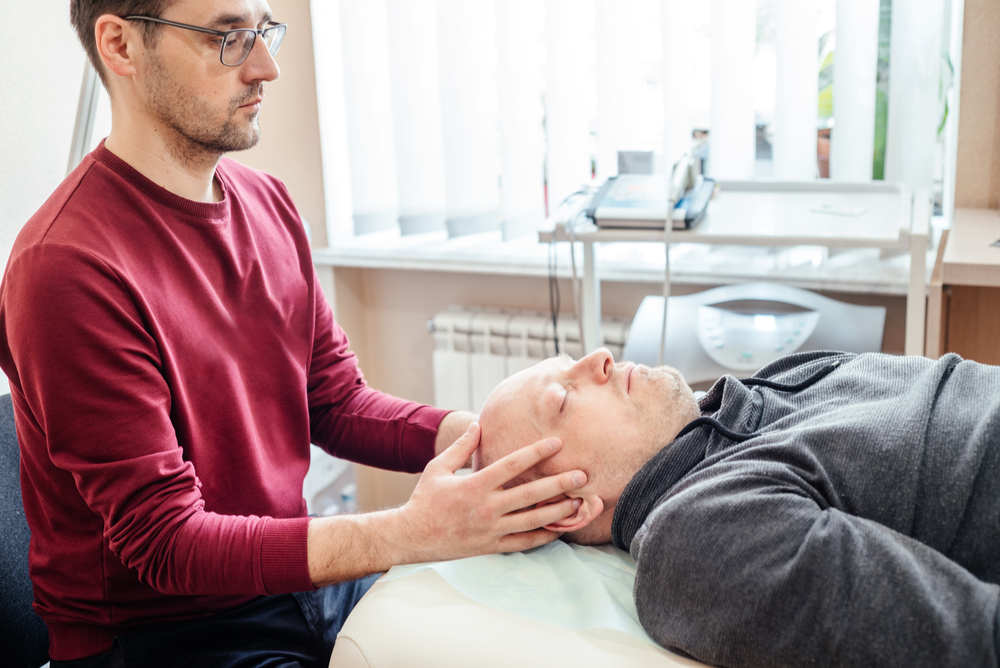Sleep Restriction Therapy – What Is It, and How Does It Work?
Sleep Restriction Therapy may be right for you if you awaken frequently at night and have difficulty falling back to sleep. Often a component of Cognitive Behavioral Therapy for insomnia (CBT-i), this therapy can also be successful by itself.
What is SRT?
A behavioral treatment for insomnia, Sleep Restriction Therapy (SRT), is primarily a strategy for treating chronic insomnia, but it can also help treat short-term sleep challenges. The goal of implementing SRT is to improve your sleep efficiency (the percentage of time you sleep while in bed).
Limiting the total time you spend awake in bed helps you to associate your bed and sleeping environment with sleep instead of anxiety and sleeplessness. While this therapy helps increase the drive to sleep, individuals often experience a temporary increase in daytime fatigue.
However, it is vital to understand that SRT is about determining the correct balance between being asleep and awake and not depriving anyone of their necessary rest.
How Does It Work?
A sleep specialist will usually administer SRT to guide the patient through the critical steps of this therapy.
The initial step is to implement and maintain a sleep diary. Recording the time that you go to bed, fall asleep, and the time you are awake during the night is crucial in determining your current sleep schedule and efficiency.
Your sleep diary can also include the following:
- Other data like how much caffeine and alcohol you may consume.
- Medications you take.
- Health issues.
- Other information related to your rest.
Upon establishing your existing sleep schedule and efficiency, the therapist will work with you to develop a sleep schedule to match your needs with strategies such as a regular bedtime, wake time, and limiting your time in bed to only the time you are sleeping.
Stimulus control is another vital technique for creating your sleep-only environment. The goal of stimulus control is to manage your habits and activities that often cause sleeplessness. Strategies can include:
- Limiting screen time on TV and electronic devices.
- Avoid reading in bed.
- Eliminating daytime napping.
- Addressing similar challenges to your quality of rest.
Relaxation therapy is another vital component of SRT. Meditation, progressive muscle relaxation, deep breathing, and visualization are among the most frequent strategies for relaxation therapy.
Also, it is essential to evaluate underlying issues like depression, stress, and medical conditions to address them regarding your sleep problems successfully. Since sleep restriction therapy can temporarily increase daytime fatigue, it is not a good option for those with medical conditions that can worsen by losing sleep, such as seizures and bipolar disorder.
What to Expect
Initially, you will most likely experience elevated daytime sleepiness. As you implement the recommended strategies, you will experience better quality and more regular rest, reducing your daytime drowsiness.
SRT is not a magic bullet or a quick fix.
It requires diligence and incorporating best practices like:
- Avoiding daytime naps,
- Practicing good sleep hygiene,
- Keeping a sleep diary to accumulate data,
- Using that data to implement the necessary Sleep Restriction Therapy steps
As you implement these strategies and incorporate the various techniques of SRT, your sleep time will gradually lengthen, and the quality of your sleep will improve drastically.
What about Sleep Compression?
A slightly different and gentler approach than SRT, sleep compression can be a better option for treating older people with insomnia. Rather than an immediate reduction in the time in bed versus the amount of sleep on a typical night, sleep compression employs a gradual strategy for reducing time awake in bed.
Sleep compression and SRT are the same strategies with different methods for implementation and follow-through.
Final Thoughts
Sleep Restriction Therapy is often helpful in improving sleep efficiency for many individuals enduring insomnia. Although generally beneficial, it may not be a good choice for individuals with certain health conditions.
SRT can identify the best strategies for improving the quality and efficiency of your sleep. Successfully implementing those strategies is essential and can be challenging for many.
Having the support of a personal sleep coach who can guide you to follow through on the necessary steps of SRT consistently is a true benefit.
Sleep Science Academy’s uniquely empowering program pairs clients with a personal, professional sleep coach for unparalleled support in obtaining their goal of a lifetime of restorative sleep.
Helping individuals achieve better, healthier restorative rest for life is our mission. Contact us today to schedule your complimentary sleep consultation to learn more about our highly successful program and whether SRT may be your best therapy option.
You can read this brief article to learn more about the Sleep Science Academy difference and Dynamic Sleep Recalibration (DSR).

